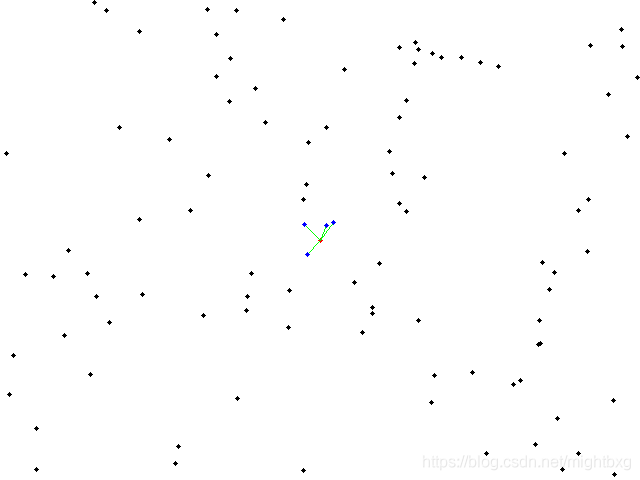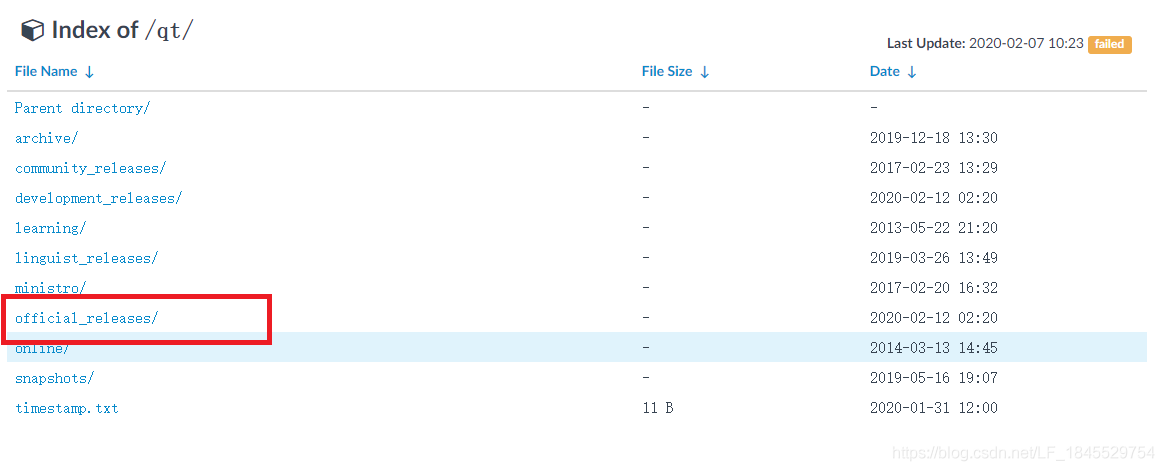当前位置:网站首页>Palindromic Primes
Palindromic Primes
2022-04-23 06:46:00 【Round moon】
Palindromic Primes Category in Jeopardy!
Problem description
Prime numbers are defined as follows: a number is prime if it is greater than 1 and is evenly divisible only by itself and 1. Note that by definition neither zero nor one is a prime number.
A palindromic number is one whose string representation is a palindrome, that is, a string that reads the same backwards and forwards.
You are on the clue crew preparing questions for the category “Palindromic Primes” and are to write a program to generate the answer and responding question in Jeopardy! style.
Input
The input file contains a series of number pairs (with white space separating them) specifying individual problems, ending with a pair of zeroes. The first number gives the number of digits for the numbers to be considered, the second number gives the base in which the numbers are to be generated. The numbers are separated by a single space. You are assured that all palindromic primes for this problem can be represented in the range of a standard 32-bit signed integer. The bases allowed are integer bases between 2 and 36 — with bases above base ten handled as extensions of hexadecimal. This means that the valid numeric digits are in the range [‘0’…‘9’] and [‘a’…‘z’].
Output
For each number, generate one line giving the number of digits and the base as the answer and then on the next line the number of palindromic primes found as the question as shown in the sample output. Each output pair should be separated by a blank line.
Sample Input
1 10
2 10
3 10
4 24
5 4
0 0
Sample Output
The number of 1-digit palindromic primes < 2^31 in base 10.
What is 4?
The number of 2-digit palindromic primes < 2^31 in base 10.
What is 1?
The number of 3-digit palindromic primes < 2^31 in base 10.
What is 15?
The number of 4-digit palindromic primes < 2^31 in base 24.
What is 0?
The number of 5-digit palindromic primes < 2^31 in base 4.
What is 10?
The main idea of the topic
Defines a special number called palindrome prime .
such as 11 Is a palindrome prime . But this question is not so easy to give up and toss you .
He also defined a kind of palindrome prime in different base systems . This base number can be up to 36 Base number .
such as ZXZ It's a palindrome number . This number is actually only Three place , Never lean on the decimal system .
He also specifies the length of the palindrome prime !
Thinking analysis
Then let's talk about the idea of solving problems .
We can construct half of the palindrome number , The other half naturally knows .
such as 12321 We can construct 123 The other half is 21
Because this number is increasing . Neither less than nor greater than is the range to be . Only one interval is valid .
Let's just run out of his possession with violence , Of course, if more than 1e31 Quit naturally .
The second step , We need to convert the constructed palindrome number into decimal system and use prime detection method , In fact, that is Miller Robin Algorithm
Miller Robin's general operation is , Use Fermat theorem to verify whether it is a prime number , The probability of each error is about 0.25 about , Repeated detection can minimize the error probability .
Accepted Code
//#include<unordered_map>
#include<algorithm>
#include<iostream>
#include<string.h>
#include <iomanip>
#include<stdio.h>
#include<vector>
#include<string>
#include<math.h>
#include<cmath>
#include<queue>
#include<stack>
#include<deque>
#include<map>
#include<set>
using namespace std;
typedef long long ll;
typedef unsigned long long ull;
const ll ll_inf = 9223372036854775807;
const int int_inf = 2147483647;
const short short_inf = 32767;
const ll less_inf = 0x3f3f3f3f;
const char char_inf = 127;
#pragma GCC optimize(2)
#define accelerate cin.tie(NULL);cout.tie(NULL);ios::sync_with_stdio(false);
#define PI 3.141592653589793
#define EPS 1.0e-8
ll gcd(ll a, ll b) {
return b ? gcd(b, a % b) : a;
}
ll lcm(ll a, ll b) {
return a / gcd(a, b) * b;
}
inline ll read() {
ll c = getchar(), Nig = 1, x = 0;
while (!isdigit(c) && c != '-')c = getchar();
if (c == '-')Nig = -1, c = getchar();
while (isdigit(c))x = ((x << 1) + (x << 3)) + (c ^ '0'), c = getchar();
return Nig * x;
}
inline void out(ll a) {
if (a < 0)putchar('-'), a = -a;
if (a > 9)out(a / 10);
putchar(a % 10 + '0');
}
ll qpow(ll x, ll n, ll mod) {
ll res = 1;
while (n > 0) {
if (n & 1)res = (res * x) % mod;
x = (x * x) % mod;
n >>= 1;
}
return res;
}
#define read read()
ll qmul(ll x, ll y, ll mod) {
return (x * y - (long long)(x / (long double)mod * y + 1e-3) * mod + mod) % mod;
}
bool Miller_Rabin(ll p) {
ll prime[] = {
2, 3, 5, 233, 331 };
if (p < 2 || p != 2 && p % 2 == 0) return false;
ll s = p - 1;
while (!(s & 1)) s >>= 1;
for (int i = 0; i < 5; i++) {
if (p == prime[i]) return true;
ll t = s, m = qpow(prime[i], s, p);
while (t != p - 1 && m != 1 && m != p - 1)
m = qmul(m, m, p), t <<= 1;
if (m != p - 1 && !(t & 1)) return false;
}
return true;
}
char mark[] = "0123456789ABCDEFGHIJKLMNOPQRSTUVWXYZ";
char now[100];
int n, m;
bool sw;
bool can;
bool sw2;
void change(int num)
{
int base = m;
char temp[100];
int cnt = 0;
while (num)
{
temp[cnt++] = mark[num % base];
num /= base;
}
if ((n & 1))
{
if (cnt * 2 - 1 != n)
{
if (can)sw2 = false;
sw = false;
return;
}
}
else
{
if (cnt * 2 != n)
{
if (can)sw2 = false;
sw = false;
return;
}
}
can = true;
for (int i = 0; i < cnt; i++)
now[i] = temp[cnt - 1 - i];
if (cnt * 2 == n)
{
int j = cnt;
for (int i = 0; i < cnt; i++, j++)
now[j] = temp[i];
now[j] = 0;
}
else
{
int j = cnt;
for (int i = 1; i < cnt; i++, j++)
now[j] = temp[i];
now[j] = 0;
}
}
int main()
{
int CNT = 0;
while (scanf("%d%d", &n, &m) != EOF)
{
if (n == 0 && m == 0)break;
if (CNT++)puts("");
int res = 0;
can = false;
sw2 = true;
for (int i = 1; sw2 && i <= 100000000; i++)
{
sw = true;
change(i);
if (sw)
{
ll val = 0;
for (int j = 0; j < n; j++)
{
char t = now[j];
if (t <= '9')t -= '0';
else t = t - 'A' + 10;
val += ll(t) * qpow(m, j, ll_inf);
}
if (val < (1ll << 31) && Miller_Rabin(val))res++;
}
}
printf("The number of %d-digit palindromic primes < 2^31 in base %d.\n", n, m);
printf("What is %d?\n", res);
}
}
By-Round Moon
版权声明
本文为[Round moon]所创,转载请带上原文链接,感谢
https://yzsam.com/2022/04/202204230549499209.html
边栏推荐
- [UDS unified diagnostic service] II. Network layer protocol (2) - data transmission rules (single frame and multi frame)
- 搭建openstack平台
- 汇编 32位无符号加法计算器
- 2020 Jiangsu Collegiate Programming Contest-A.Array
- 深蓝学院激光slam 理论与实践 第三章激光雷达去畸变 作业习题
- VHDL-任意分频器(50%占空比)
- _findnext 报错
- Cross domain issues - allow origin header contains multiple values but only one is allowed
- cartographer_node 编译没问题,但是运行直接挂掉的bug
- FOC SVPWM函数PWMC_SetPhaseVoltage解析
猜你喜欢
随机推荐
WMI技术介绍和应用
Qt 添加QSerialPort类 实现串口操作
Notes on advanced points of C language 5
C51/C52 特殊功能寄存器表
vs中能编译通过,但是会有红色下划线提示未定义标示符问题
Shell脚本 &&和||的使用
基于Keras的时装分类案例
Eigen 学习总结
POJ-The Unique MST
往String原型上封装一个时间戳转日期的方法
对象的动态建立和释放,赋值和复制
FOC 单电阻采样 位置环控制伺服电机
Generate shortcut
Interprocess communication - mutex
时间戳转格式化日期
声明为全局变量
【踩坑】Win11 WSL2 中 meld 无法正常使用问题修复
Uniapp encapsulates request
圆整 round 的一点点小细节
Sdoi2009-hh Necklace








